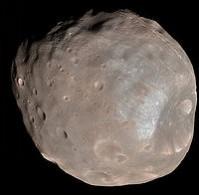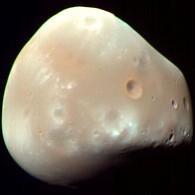
Latest research reveals that Mars has started forming rings, like Saturn, thanks to the remnants of its two moons.
According to researchers from India's Physical Research Laboratory, cited in the journal Icarus, the debris surrounding Mars is likely to collect into a set of rings encompassing it.


Astronomers have estimated that Phobos and Deimos -- the two Martian moons — are likely to eventually form rings encircling the planet.
It is believed that at some point in the future, the moons will shatter after getting too close to the planet due to its gravitational pull.
According to latest research, the process has already started and will take around 20 to 70 million years before the rings are fully formed, rt.com reported.
In 2013, NASA's Mars Atmosphere and Volatile Evolution (MAVEN) transmitted data that detected a high-altitude cloud, comprising debris, surrounding the planet.
According to researchers, this is the proof pointing towards the formation of rings around the Red Planet. The accumulated data also states that some of the dust around the planet has originated from the moons (approximately 0.6 per cent).
"To really say anything definitive about the dust, you really need to have a dedicated dust detector," Laila Anderssen, one of the researchers from the University of Colorado Boulder, told New Scientist.
Researchers estimate that solar winds have demolished the smaller particles and the proto-rings are now being joined by larger particles.
They added that the existence of moon particles in the Martian atmospheric cloud doesn't assure that ring development is taking place, but it points towards the possibility of its happening.
"We still haven't seen a good indication that there is significant material in the vicinity of the moons. So, I think it's a long shot... but one should never say never," Anderssen said.














